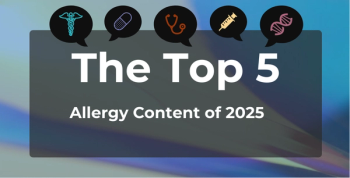
Inconsistent Reporting of Adverse Drug Reactions in US Versus Europe
Adverse drug reaction profiles for 12 marketed antidepressant and anticonvulsant medications are inconsistently reported in Europe versus the United States.
Adverse drug reaction (ADR) profiles for 12 marketed antidepressant and anticonvulsant medications are inconsistently reported in Europe versus the United States (US) even though they are marketed by the same pharmaceutical companies, according to a new study by European investigators.
The study, by Victoria R. Cornelius, of Imperial College in London, and colleagues, was
“While some variability would be anticipated due to differences in regulatory cycles between regions and construction of the documents by different company teams, we would expect that the ADR profile between paired documents would be similar, as it should be based on centralized safety data,” the investigators noted.
For each drug studied, data came from the US Product Inserts and the European Summary of Product Characteristics between September 2013 and January 2015. The researchers focused on all ADRs reported in product information sections 5 and 6 for the US-marketed medications and in 4.4 and 4.8 in the Europe-marketed medications in these paired documents.
On average there were 77 more ADRs reported in the US versus the European product information documents, with a median number of 201 ADRs (range, 65-425) and 114 (range, 56-265), respectively. More product information documents in the US reported information on the source of evidence and risk for more than 80% of ADRs included in the document.
There was “negligible” information about the duration, severity, reversibility, or recurrence of ADRs, the researchers said. On average, only 29% of ADR terms were reported in both US and European documents about a particular medication. This lack of contextual data that is so important to patients and prescribers (such as duration, severity, and reversibility of ADRs) hinders the ability of healthcare providers to provide considered risk-benefit advice across competing drug therapies to patients, the study concludes.
The cause of ADRs is often time-dependent, and absolute risk will depend on the duration of exposure; therefore, information on the observation period is needed for interpretation, the study authors say. However, only a few US or European documents contained information on duration of observation periods. Only one US document contained any information about duration of an ADR; only four US documents presented information on ADR severity. In general, US documents contained a larger number of ADRs, and it was often unclear if these harm events were truly ADRs rather than adverse events (AEs), the investigators note.
“It is possible the over-inclusion of many AEs is made to minimize the risk of litigation since the manufacturers of the brand drug are held legally responsible if these are not reported,” they said.
Over-inclusion of AEs makes the absorption of pertinent harm information harder for prescribers and patients.
“The lack of consistency demonstrated in this study across matched drug documents raises questions as to whether information across a class of drugs produced by different manufacturers could ever be usefully compared,” the authors stated.
Newsletter
Stay ahead of policy, cost, and value—subscribe to AJMC for expert insights at the intersection of clinical care and health economics.







































